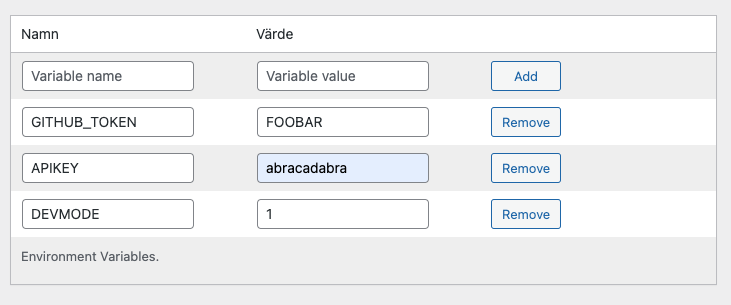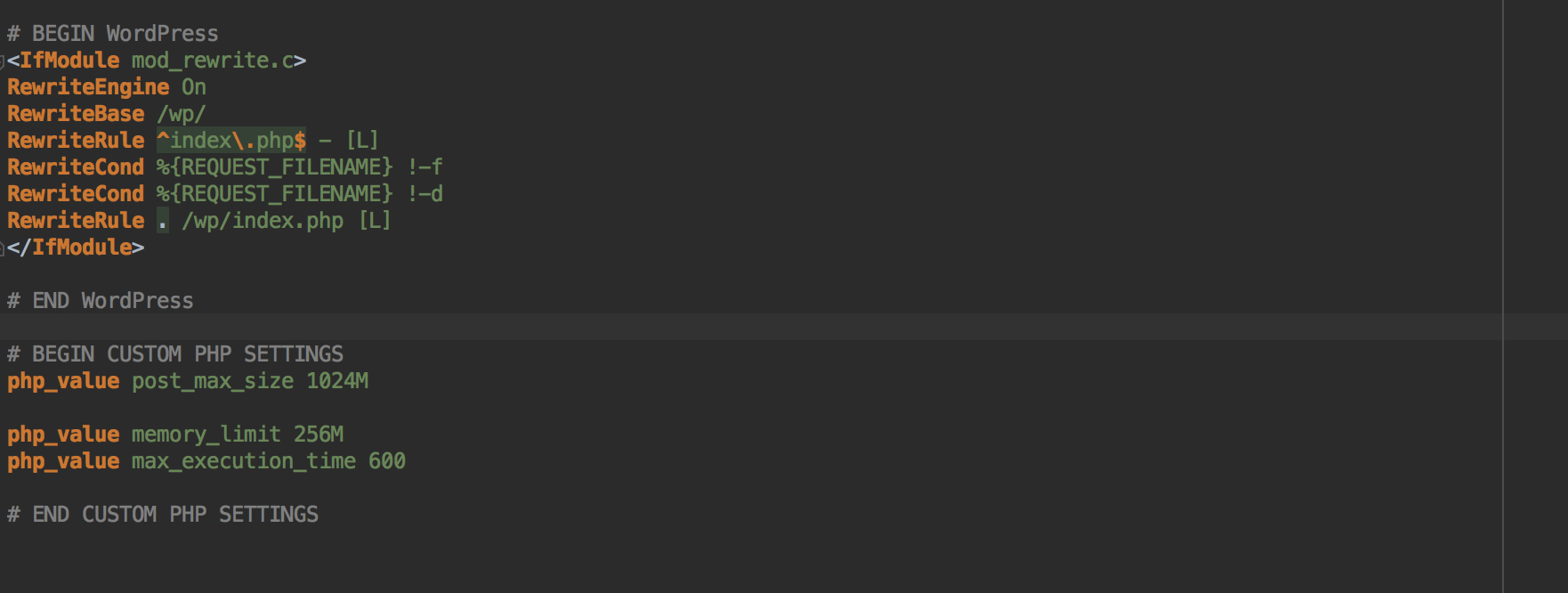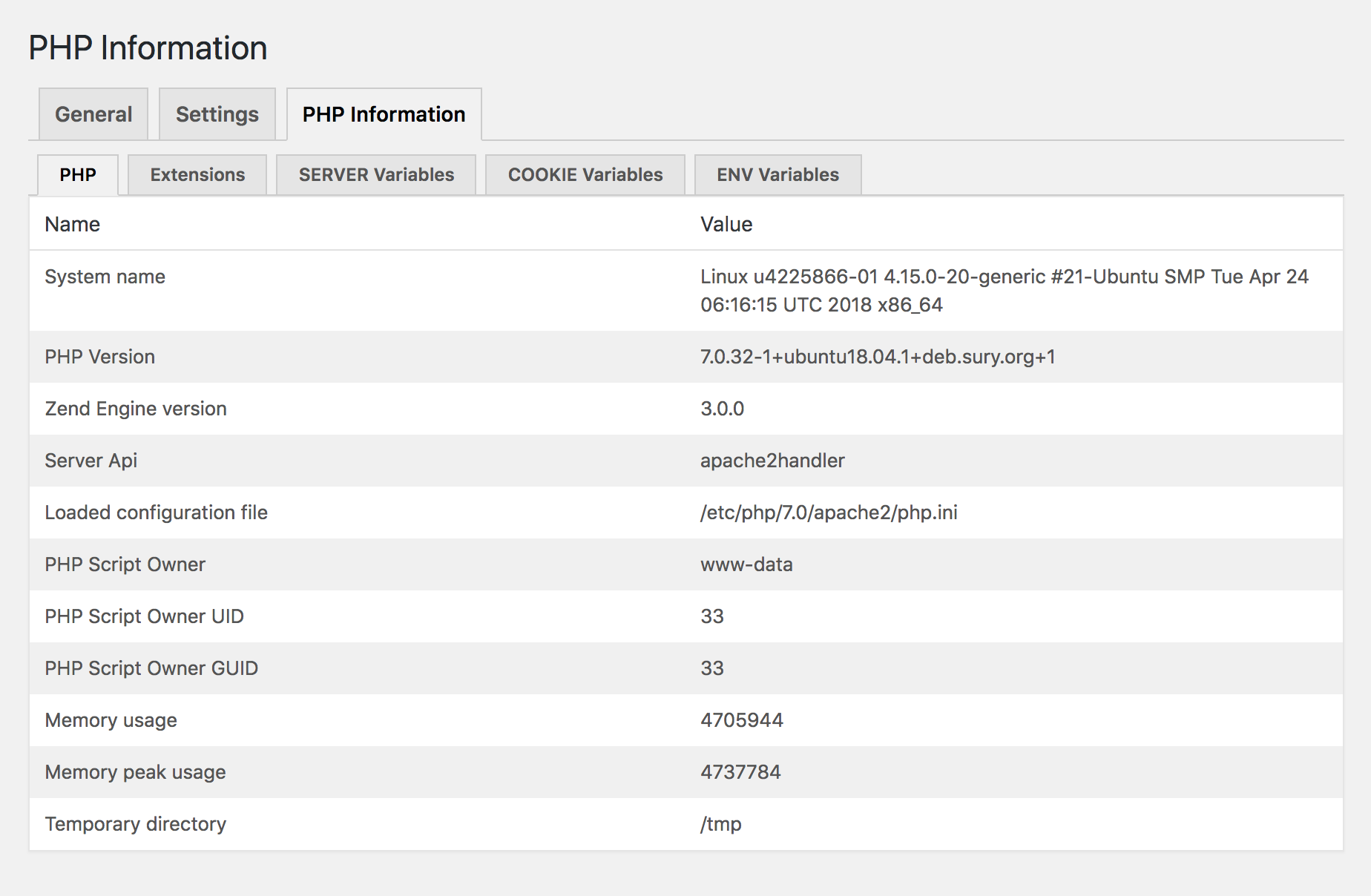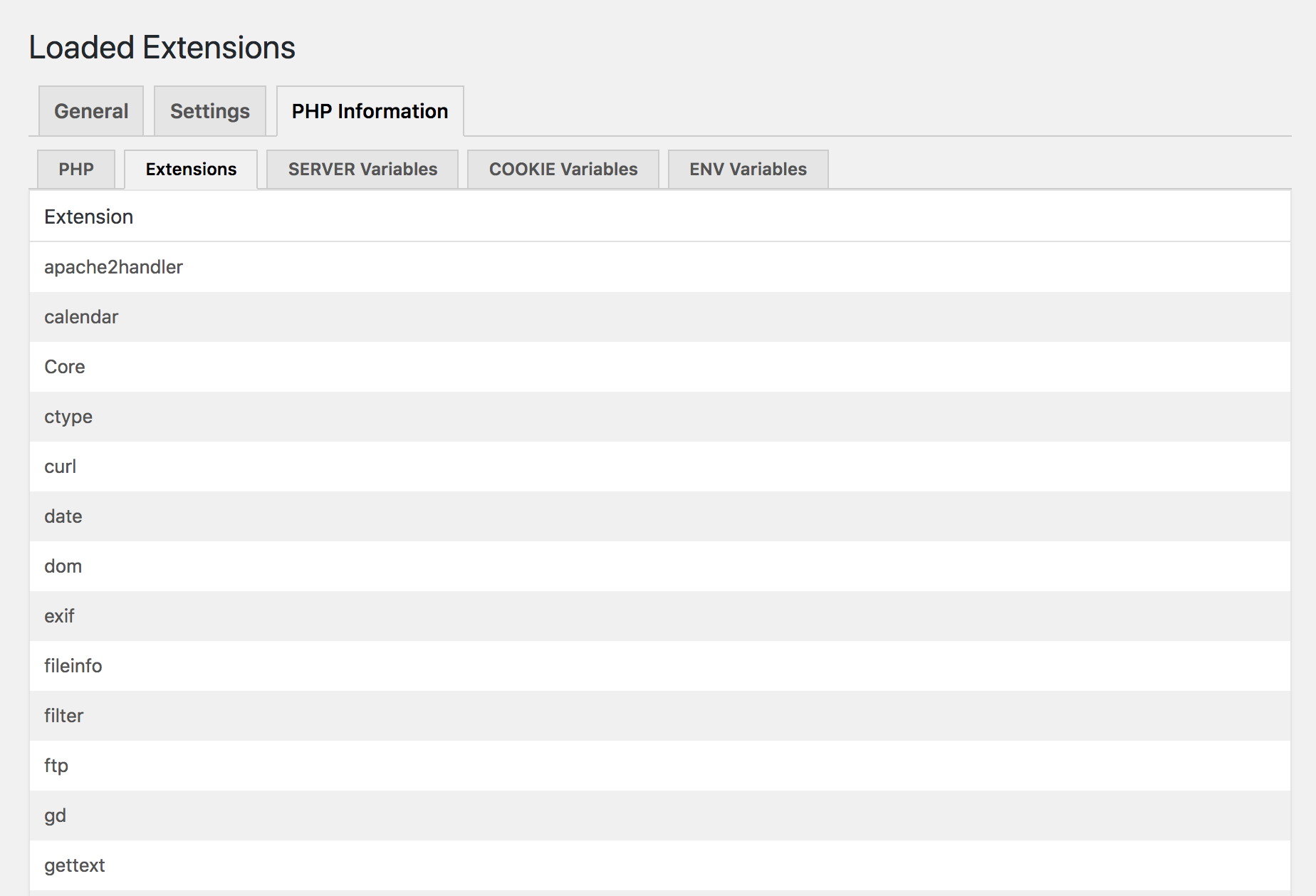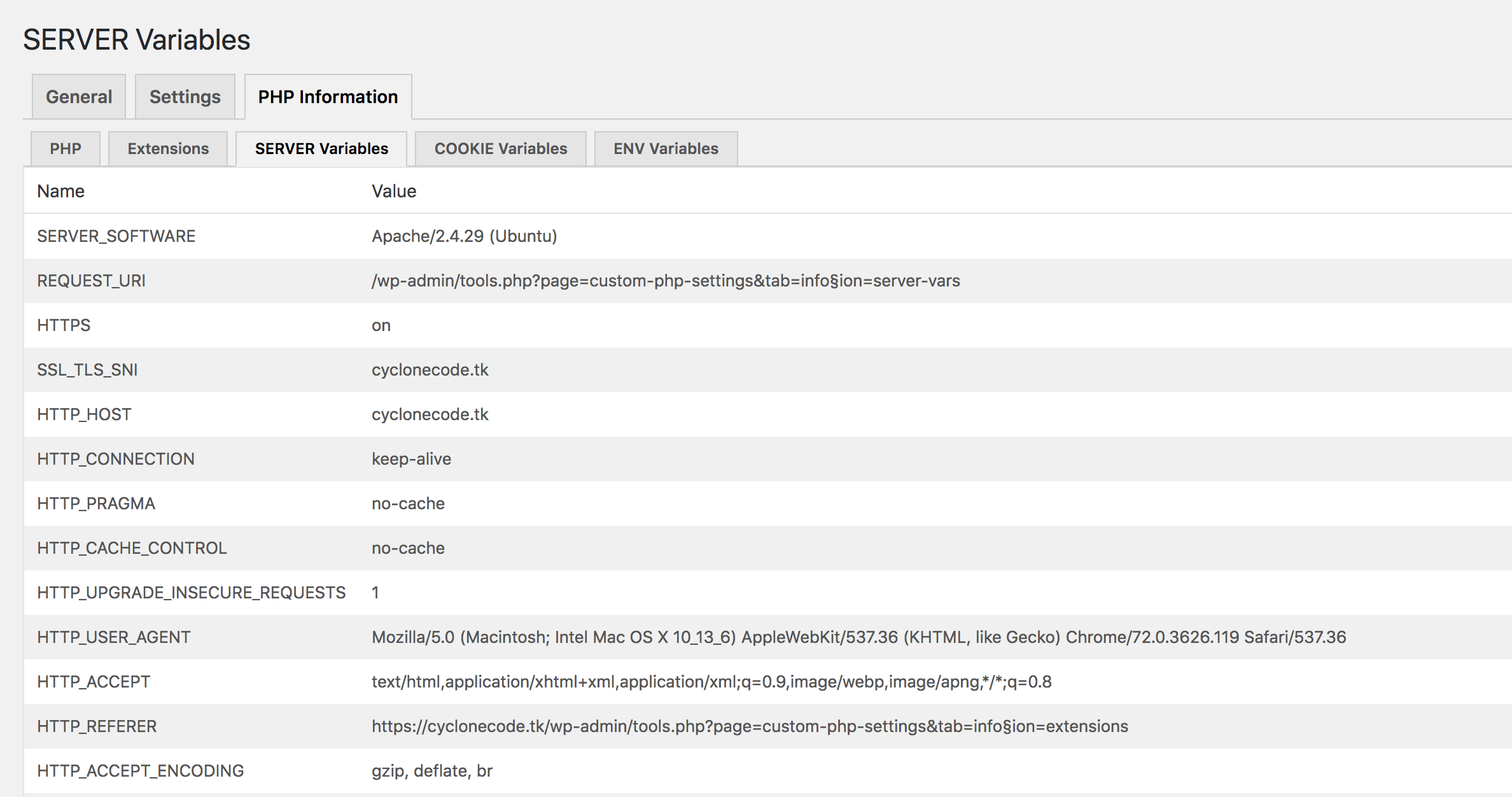Custom PHP Settings
| 开发者 |
cyclonecode
freemius |
|---|---|
| 更新时间 | 2025年11月1日 15:40 |
| 捐献地址: | 去捐款 |
| PHP版本: | 5.6 及以上 |
| WordPress版本: | 6.8.3 |
| 版权: | GPLv2 or later |
| 版权网址: | 版权信息 |
详情介绍:
This plugin can be used to customize php settings for you WordPress installation.
The plugin will modify either the .htaccess file or .user.ini file in order to change the current php settings directly from within the settings page.
Since the configuration file needs to be modified this file must be writable for this plugin to work as expected.
Apache module
When PHP is running as an Apache module the .htaccess file will be used to set customized settings; make sure so that this file exists and is writable by the webserver.
CGI/Fast-CGI
If instead PHP is running in CGI/Fast-CGI mode then a custom INI file will be used. The name of this file depends on the value of user_ini.filename in the php configuration, by default it is .user.ini.
You can check the name of you custom INI file in the PHP Information table. The custom INI file should be placed under the root folder and most be writable by the webserver.
Notice that there is also a User INI file cache TTL value in the information table, this value tells how long the custom INI file will be cached before it gets reloaded.
For instance, if this value is set to 300 then any changes to your custom INI file will not be reflected for up to 5 minutes. The name for this setting in the php configuration is user_ini.cache_ttl.
One important thing is to make sure that your
.user.ini file is blocked by your webserver. If you are running NGINX this can be done by adding:
location ~ /\.user\.ini { deny all; }
to your server configuration. The same thing using Apache is done by adding the following to the configuration if not already done:
<Files .user.ini> order allow,deny deny from all </Files>
Available Settings
The settings table will display all non-system php settings that can be customized by the plugin. All modified settings will be displayed in red in this table.
Some settings might be displayed in red because they are changed somewhere else, perhaps through a customized php.ini file, by WordPress itself, a plugin or in some other way.
For instance if you have enabled WP_DEBUG in your wp-config.php file the error_reporting setting will turn red.
If you have questions or perhaps some idea on things that should be added you can also try slack.
Multiple Configurations
The premium version adds support for creating multiple named configurations which all can hold their own custom PHP settings.
You will then be able to easily switch between the different configurations entries applying them to you configuration file.
Environment Variables
In the premium version, when running PHP as an apache module and using an .htaccess file for configuration, you are able
to add custom environment variables. These will be accessible by using the super global $_SERVER array.
In order for this to work you will need to have the mod_env module enabled in your apache setup.
Resources
A complete list of settings that can be modified can be found here: List of php.ini directives
Notice that directives marked as PHP_INI_SYSTEM can not be modified.
安装:
- Upload custom-php-settings-pro to the /wp-content/plugins/ directory,
- Activate the plugin through the Plugins menu in WordPress.
- You can now modify your php settings by going to the settings page located under wp-admin/admin.php?page=custom-php-settings-pro.
屏幕截图:
常见问题:
I have saved a setting in the editor but the PHP setting does not reflect this?
Make sure so you have checked the Update configuration file checkbox beneath the editor.
更新日志:
= 2.4.0
- Update: Add Freemius SDK as a composer dependency.
- Fix: Use after_setup_theme to initialize the plugin.
